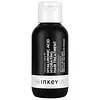What's inside
What's inside
 Key Ingredients
Key Ingredients

 Benefits
Benefits

 Ingredients Side-by-side
Ingredients Side-by-side

Water
Skin ConditioningButylene Glycol
HumectantPropanediol
SolventSodium Hyaluronate
HumectantAcetyl Tetrapeptide-3
Skin ProtectingNiacinamide
SmoothingPanthenol
Skin ConditioningTrifolium Pratense Flower Extract
AstringentApium Graveolens Seed Extract
AntioxidantCamellia Sinensis Leaf Extract
AntimicrobialBiotinoyl Tripeptide-1
Nicotiana Benthamiana Hexapeptide-40 Sh-Polypeptide-86
Nicotiana Benthamiana Hexapeptide-40 Sh-Polypeptide-9
Nicotiana Benthamiana Octapeptide-30 Sh-Oligopeptide-2
Skin ConditioningSodium Tocopheryl Phosphate
AntioxidantDextran
1,2-Hexanediol
Skin ConditioningCaprylhydroxamic Acid
Citric Acid
BufferingGlycerin
HumectantWater, Butylene Glycol, Propanediol, Sodium Hyaluronate, Acetyl Tetrapeptide-3, Niacinamide, Panthenol, Trifolium Pratense Flower Extract, Apium Graveolens Seed Extract, Camellia Sinensis Leaf Extract, Biotinoyl Tripeptide-1, Nicotiana Benthamiana Hexapeptide-40 Sh-Polypeptide-86, Nicotiana Benthamiana Hexapeptide-40 Sh-Polypeptide-9, Nicotiana Benthamiana Octapeptide-30 Sh-Oligopeptide-2, Sodium Tocopheryl Phosphate, Dextran, 1,2-Hexanediol, Caprylhydroxamic Acid, Citric Acid, Glycerin
Ingredients Explained
These ingredients are found in both products.
Ingredients higher up in an ingredient list are typically present in a larger amount.
Panthenol is a common ingredient that helps hydrate and soothe the skin. It is found naturally in our skin and hair.
There are two forms of panthenol: D and L.
D-panthenol is also known as dexpanthenol. Most cosmetics use dexpanthenol or a mixture of D and L-panthenol.
Panthenol is famous due to its ability to go deeper into the skin's layers. Using this ingredient has numerous pros (and no cons):
Like hyaluronic acid, panthenol is a humectant. Humectants are able to bind and hold large amounts of water to keep skin hydrated.
This ingredient works well for wound healing. It works by increasing tissue in the wound and helps close open wounds.
Once oxidized, panthenol converts to pantothenic acid. Panthothenic acid is found in all living cells.
This ingredient is also referred to as pro-vitamin B5.
Learn more about PanthenolSodium Hyaluronate is hyaluronic acid's salt form. It is commonly derived from the sodium salt of hyaluronic acid.
Like hyaluronic acid, it is great at holding water and acts as a humectant. This makes it a great skin hydrating ingredient.
Sodium Hyaluronate is naturally occurring in our bodies and is mostly found in eye fluid and joints.
These are some other common types of Hyaluronic Acid:
Learn more about Sodium HyaluronateWater. It's the most common cosmetic ingredient of all. You'll usually see it at the top of ingredient lists, meaning that it makes up the largest part of the product.
So why is it so popular? Water most often acts as a solvent - this means that it helps dissolve other ingredients into the formulation.
You'll also recognize water as that liquid we all need to stay alive. If you see this, drink a glass of water. Stay hydrated!
Learn more about Water